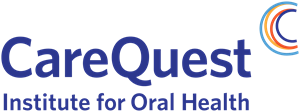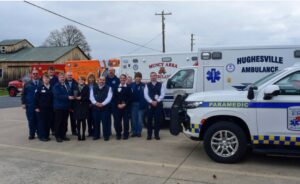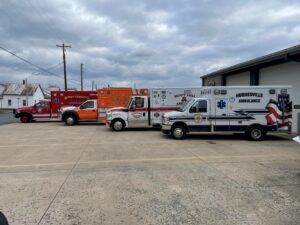 Volunteers in Service to America – also known as VISTA – is a federal service program that provides resources and staffing to public and nonprofit organizations to address poverty and poverty-related problems. AmeriCorps VISTA members are placed at sponsoring organizations and serve for one year at approximately 40 hours per week. The concept paper is a preliminary screening tool that AmeriCorps uses to evaluate whether the organization would be an appropriate VISTA sponsor and if the proposed project meets core criteria. Priorities include economic opportunity, education, access to health care, and environmental stewardship for rural areas, tribal communities, and areas of concentrated poverty. Accepting Papers Until January 18
Volunteers in Service to America – also known as VISTA – is a federal service program that provides resources and staffing to public and nonprofit organizations to address poverty and poverty-related problems. AmeriCorps VISTA members are placed at sponsoring organizations and serve for one year at approximately 40 hours per week. The concept paper is a preliminary screening tool that AmeriCorps uses to evaluate whether the organization would be an appropriate VISTA sponsor and if the proposed project meets core criteria. Priorities include economic opportunity, education, access to health care, and environmental stewardship for rural areas, tribal communities, and areas of concentrated poverty. Accepting Papers Until January 18
Spread the Word About Health Insurance.
 The Centers for Medicare & Medicaid Services has a collection of tools for helping individuals and families get health insurance during the Marketplace Open Enrollment period, November 1, 2022, through January 15, 2023. Graphics, social media messages, and customizable posters and fact sheets, are available in English, Spanish, Chinese, Korean, and Vietnamese. Marketplace plans are an important source of coverage for people in rural areas, who represent approximately 15 percent of Marketplace enrollees in states using HealthCare.gov.
The Centers for Medicare & Medicaid Services has a collection of tools for helping individuals and families get health insurance during the Marketplace Open Enrollment period, November 1, 2022, through January 15, 2023. Graphics, social media messages, and customizable posters and fact sheets, are available in English, Spanish, Chinese, Korean, and Vietnamese. Marketplace plans are an important source of coverage for people in rural areas, who represent approximately 15 percent of Marketplace enrollees in states using HealthCare.gov.
Surge in Pediatric Respiratory Infections
 HRSA’s Maternal and Child Health Bureau is asking providers to share an important message about an unprecedented surge of respiratory illness in children. While the typical RSV season begins in late fall, this year’s outbreak started in the spring and severe illness continues to increase. Most children are exposed to the respiratory syncytial virus, or RSV, in the first year of life and almost all have been infected within 2 years. While RSV infections can be severe in the first 6 months, subsequent infections are usually milder, causing cold-like symptoms. During the first 18 months of the pandemic, masking and distancing measures kept the virus from circulating. But this year and last, as in-person gatherings increased and children when back to school and daycare without masks, the virus has affected kids with little to no immunity.
HRSA’s Maternal and Child Health Bureau is asking providers to share an important message about an unprecedented surge of respiratory illness in children. While the typical RSV season begins in late fall, this year’s outbreak started in the spring and severe illness continues to increase. Most children are exposed to the respiratory syncytial virus, or RSV, in the first year of life and almost all have been infected within 2 years. While RSV infections can be severe in the first 6 months, subsequent infections are usually milder, causing cold-like symptoms. During the first 18 months of the pandemic, masking and distancing measures kept the virus from circulating. But this year and last, as in-person gatherings increased and children when back to school and daycare without masks, the virus has affected kids with little to no immunity.
New Funding Available to Promote Affordable Broadband
 The Federal Communications Commission (FCC) will make $70 million available to governmental and non-governmental entities to increase participation in the Affordable Connectivity Program (ACP), an ongoing program that provides qualifying low-income households with discounts on broadband service and connected devices. The Affordable Connectivity Outreach Grant Program (Grants.gov posting) will make approximately 300 awards between $50,000 and $1 million each to eligible applicants including, but not limited to: state, local, and tribal governments; public housing agencies; social service providers; education organizations; nonprofit and community-based organizations. Funding Deadline January 9.
The Federal Communications Commission (FCC) will make $70 million available to governmental and non-governmental entities to increase participation in the Affordable Connectivity Program (ACP), an ongoing program that provides qualifying low-income households with discounts on broadband service and connected devices. The Affordable Connectivity Outreach Grant Program (Grants.gov posting) will make approximately 300 awards between $50,000 and $1 million each to eligible applicants including, but not limited to: state, local, and tribal governments; public housing agencies; social service providers; education organizations; nonprofit and community-based organizations. Funding Deadline January 9.
Review the Highlighting for Fiscal Year 2022 Federal Office of Rural Health Policy Investments
Over its 36-year history, the Federal Office of Rural Health Policy has provided billions of dollars in funding to increase healthcare access, strengthen health networks, and focus on care quality improvements for Critical Access Hospitals and small rural hospitals. In the fiscal year 2022, the Health Resources and Services Administration (HRSA) – through the Federal Office of Rural Health Policy (FORHP) – provided approximately $408 million in funding to increase healthcare access, strengthen health networks, and focus on care quality improvements for Critical Access Hospitals and small rural hospitals as detailed in this HRSA Rural Health Fact Sheet.
FORHP is also supporting HRSA’s goal to achieve health equity by supporting efforts to strengthen healthcare delivery systems, reduce the morbidity and mortality associated with substance use disorder, and provide COVID-19 pandemic relief in rural communities. See this State-by-State summary for grants to rural communities and states.
Bulletin Addresses Pain, Mental Health, Substance Use, and Oral Health
The National Institute or Dental and Craniofacial Research (NIH) Oral Health in America November 2022 bulletin focuses on pain, mental health, substance use, and oral health. Mental health remains an important public health concern and closely linked to oral health. Severe mental illness can hinder access to oral health care.
New Research Explores Dental Care in Emergency Departments

The CareQuest Institute for Oral Health recently published research that explores dental care in hospital emergency departments. The research finds that most patients seeking care could be seen at a dental office for a much lower cost. Across the county, nearly 70% of emergency department visits for non-traumatic dental conditions among patients ages 21-64 are made by those enrolled in Medicaid or who are uninsured.
CMS Announces Payment for Medically Necessary Dental Care
 The Centers for Medicare & Medicaid Services (CMS) announced that Medicare will begin making payment in 2023 for dental services necessary to identify and eliminate oral and dental infections prior to, and contemporaneously with, organ transplant, cardiac valve replacement, and valvuloplasty procedures. For services to be covered by Medicare, they must be performed by a Medicare participating provider. As part of the same final rule, the agency is establishing an annual process “to review public input on other circumstances when payment for dental services may be allowed.”
The Centers for Medicare & Medicaid Services (CMS) announced that Medicare will begin making payment in 2023 for dental services necessary to identify and eliminate oral and dental infections prior to, and contemporaneously with, organ transplant, cardiac valve replacement, and valvuloplasty procedures. For services to be covered by Medicare, they must be performed by a Medicare participating provider. As part of the same final rule, the agency is establishing an annual process “to review public input on other circumstances when payment for dental services may be allowed.”
East Lycoming Ambulance Association Receives Rural Health Program of the Year Award
 The East Lycoming Ambulance Association (ELAA), Hughesville, PA, received the Rural Health Program of the Year award, presented by the Pennsylvania Office of Rural Health (PORH). The award was presented by Lisa Davis, director of PORH and outreach associate professor of health policy and administration at Penn State, on Nov. 17 at the ELAA headquarters in Hughesville.
The East Lycoming Ambulance Association (ELAA), Hughesville, PA, received the Rural Health Program of the Year award, presented by the Pennsylvania Office of Rural Health (PORH). The award was presented by Lisa Davis, director of PORH and outreach associate professor of health policy and administration at Penn State, on Nov. 17 at the ELAA headquarters in Hughesville.
The Rural Health Program of the Year Award recognizes an exemplary health program that addresses an identified need in a rural community by utilizing unique, creative, and innovative approaches to do so.
The award was presented during 2022 Rural Health Week in Pennsylvania, Nov. 14-18. The week encompasses Nov. 17, which is National Rural Health Day, established in 2011 by the National Organization of the State Offices of Rural Health. Both events celebrate “The Power of Rural” by honoring rural American residents, health care providers, and communities.
The nomination, submitted by Joshua Dorman, ambulance captain at the Hughesville Volunteer Fire Department, Hughesville, PA, recognized the 20-year cooperative effort between four volunteer fire departments, Hughesville Volunteer Fire Company, Muncy Area Volunteer Fire Company, Picture Rocks Volunteer Fire Company, and Muncy Township Volunteer Fire Company. The association is completely self-funded by these fire companies which underwrite Emergency Medical Technicians (EMT) wages and provide the necessary equipment and facility to provide emergency services in rural Pennsylvania.
The fire companies staff a Basic Life Support ambulance seven days a week which is responsible for covering 911 emergency medical calls and vehicle accidents for 10 municipalities in rural Pennsylvania. Throughout the COVID-19 pandemic, this collaboration has been critical for the area due to the significant increase in emergency calls. Without these companies providing these essential services, many of those calls would go unanswered.
PORH was formed in 1991 as a joint partnership between the federal government, the Commonwealth of Pennsylvania, and Penn State. The office is one of 50 s

tate offices of rural health in the nation and is charged with being a source of coordination, technical assistance, networking, and partnership development.
PORH provides expertise in the areas of rural health, population health, quality improvement, oral health, and agricultural health and safety. PORH is administratively located in the Department of Health Policy and Administration in the College of Health and Human Development at Penn State University Park.
Each year, PORH presents awards to recognize rural health programs and individuals who have made substantial contributions to rural health in Pennsylvania. To learn more about the Pennsylvania Office of Rural Health, visit porh.psu.edu.
CMS Releases Framework for Advancing Health Care in Rural, Tribal, and Geographically Isolated Communities

The Centers for Medicare & Medicaid Services Office of Minority Health (CMS OMH) is recognizing the unique health care needs of individuals that live in rural, Tribal, frontier, and geographically isolated communities and territories throughout the month of November. This month, CMS will be releasing multiple new resources that show how we’re expanding on our rural health strategy and helping those that live in rural communities to achieve their optimal health, including the CMS Framework for Advancing Health Care in Rural, Tribal, and Geographically Isolated Communities.
CMS recognizes that more than 61 million Americans live in rural areas, and face several unique challenges. And those challenges can differ dramatically among the different kinds of rural areas across the country. Rural residents tend to be older and in poorer health than their urban counterparts, and rural communities often face challenges with access to care, financial viability, and the important link between health care and economic development.
Our recently released report, Advancing Rural Health Equity (PDF), outlines the various ways that CMS has gone the “extra mile” over the past year to meet the needs of rural populations, outlining activities across 10 areas of particular importance to rural health. Among the areas included are Medicare, the rural health workforce, models and demonstrations, maternal health, and COVID-19.
Additionally, we recently released the CMS Framework for Advancing Health Care in Rural, Tribal, and Geographically Isolated Communities (PDF), which builds on the previously released Rural Health Strategy (PDF) and aligns with the CMS Framework for Health Equity 2022 – 2032 (PDF) to improve health equity and reduce disparities.
As CMS OMH recognizes National Rural Health Day, we are continuing to reaffirm our commitment to helping those in rural, Tribal, frontier, and geographically isolated territories to achieve their optimal health. Below are resources that you can use to help those you serve throughout the month of November and beyond.
Join us to learn more! Register here for our November 15 webinar on the CMS Framework for Advancing Health Care in Rural, Tribal, and Geographically Isolated Communities.
Resources
- Visit our Rural Health webpage to find resources designed for the more than 50 million Americans that live in rural, Tribal, frontier, and geographically isolated territories.
- Review Advancing Rural Health Equity (PDF), which shares how CMS has met the needs of rural, Tribal, frontier, and geographically isolated communities throughout 2022.
- Review the CMS Framework for Advancing Health Care in Rural, Tribal, and Geographically Isolated Communities (PDF), which is designed to illustrate how CMS is working across its programs to promote access to high-quality, equitable care in rural, tribal, and geographically isolated communities.
- Download Rural-Urban Disparities in Health Care in Medicare (PDF), which describes rural-urban differences in health care experiences and clinical care received nationally.
- Review our Advancing Rural Maternal Health Equity Report (PDF), which provides a high-level summary of the activities that CMS OMH implemented to address maternal health disparities between June 2019 and November 2021 as a part of its Rural Maternal Health Initiative.
- View the CMS Rural Health Strategy (PDF) to learn how the Agency is applying a rural lens to new and ongoing activities, and how this approach informs the pathway by which CMS can advance the state of rural health care in America.
Sign up for our Rural Health listserv to receive the news on rural health care policy and programs.
Paid for by the US Department of Health and Human Services.
